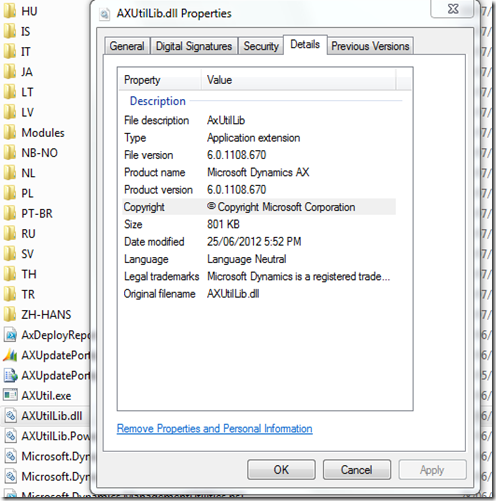ERROR: The model file MyModel.axmodel is from a newer version of Microsoft Dynamics AX (version 6.0.1108.670) and cannot be installed.
This is a common problem you may encounter when you are dealing with multiple build versions of AX 2012. Specially on a single server.
This is because of the axutil used to import is a later (newer) version than the axutil used to export the model. If you have multiple build versions on a single server. Then I would recommend you use the command line method, rather than the powershell method. Also, use the axutil under the server folder. This should match the environment you are exporting from.
Let me explain this another way. When you are running powershell method, it loads up the dll located under the ManagmentUtilities folder. When you use the command line you have a choice of using either AXUtil executable.
C:\Program Files\Microsoft Dynamics AX\60\ManagementUtilities\AXUtil.exe
C:\Program Files\Microsoft Dynamics AX\60\Server\DynamicsAx2012\bin\AXUtil.exe
Just see the properties of the dll. Notice the version number.
